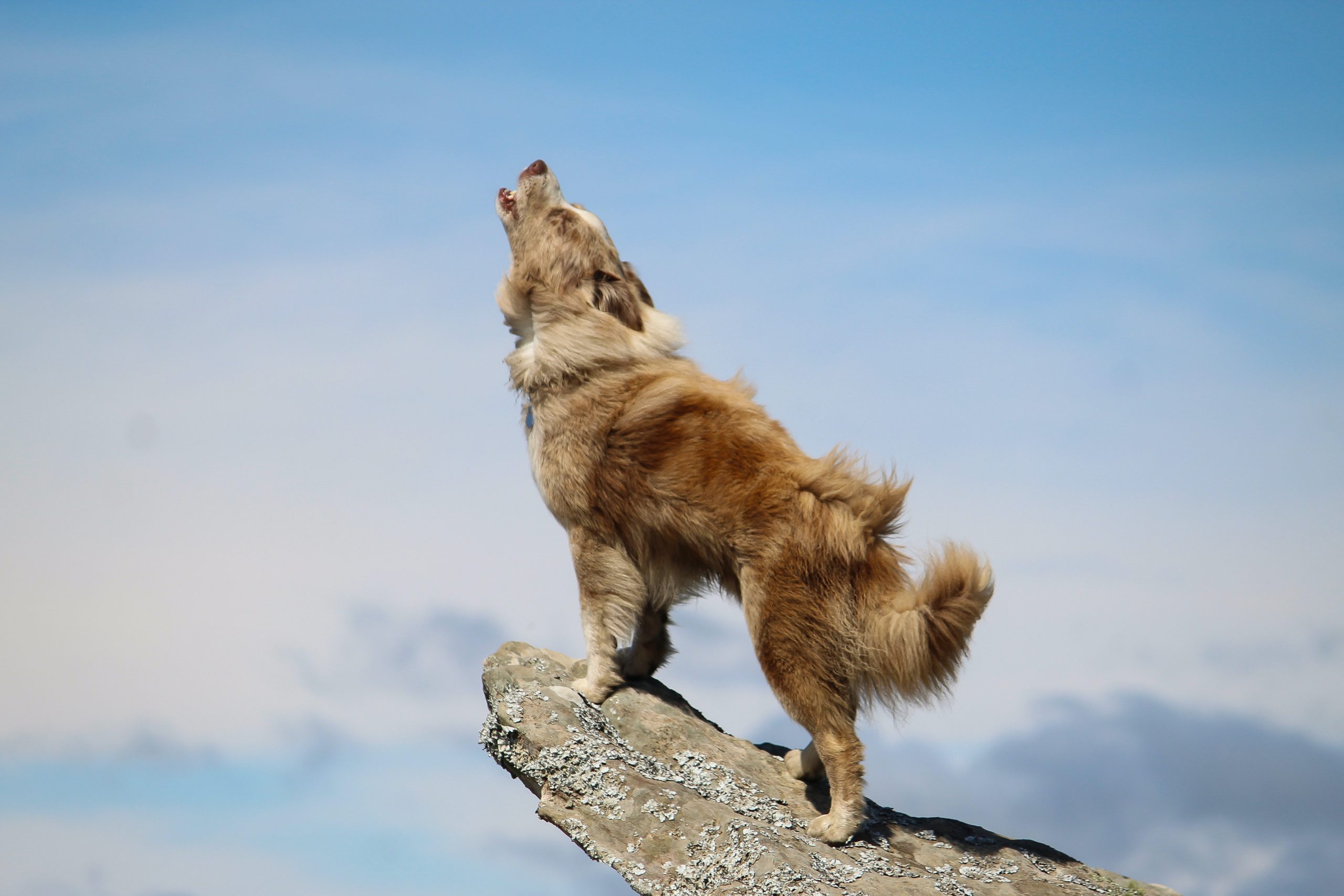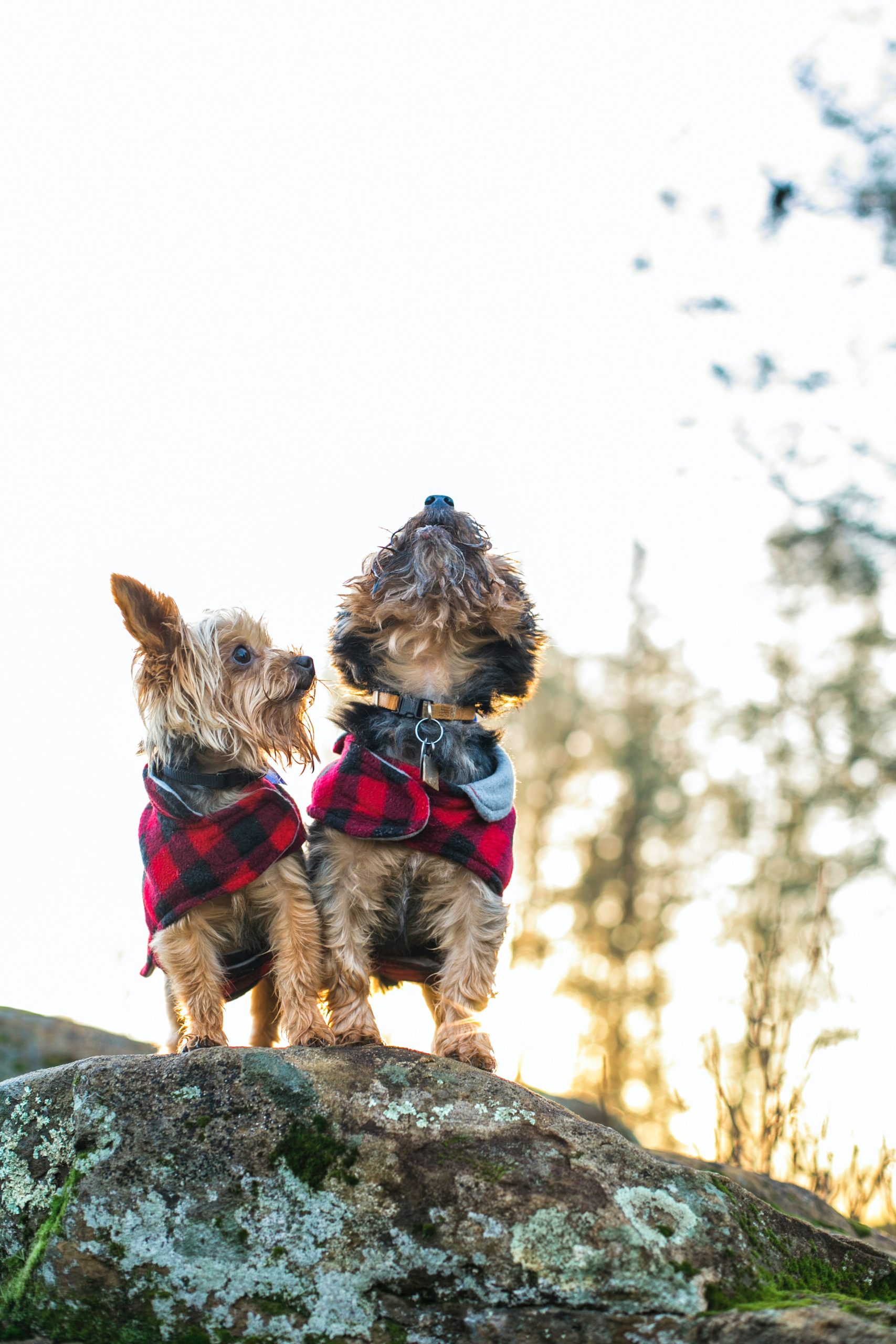Why Do Dogs Howl? Exploring the Evolutionary Roots of Dog Howling
The article explores the evolutionary origins of dog howling and the reasons why dogs howl, comparing the behavior between wolves and domestic dogs, and discussing the influence of domestication on howling behavior.
The Evolution of Howling: From Wolves to Dogs
The evolution of howling from wolves to dogs showcases the deeply rooted instinctual behaviors that have been passed down through generations. Wolves howl as a means of long-distance communication and to maintain their pack’s territory, a behavior that has been preserved in the genetic makeup of dogs [1]. The transition from wolf pack communication to domestic dog behavior has resulted in differences in the frequency and purpose of howling. While wolves primarily howl for communication and territorial purposes, dogs’ howling behavior has evolved to serve various functions in response to their changed social environment.
For example, the genetic distance of a breed from wolves influences its howling behavior. Breeds that are genetically closer to wolves are more prone to reply with their own howls to wolf howl playbacks, showcasing a direct link to their ancestral behavior. This genetic influence also extends to the physiological and behavioral traits of dogs, affecting their propensity to howl and respond to triggering noises. Additionally, the dreams of dogs , a behavior that harkens back to their evolutionary roots as wolves, allow them to reenact scenarios reminiscent of their wolf ancestors, providing a fascinating insight into the enduring essence of the wolf within dogs.
Reasons Why Dogs Howl
Dogs howl for a multitude of reasons, and it serves as a way for them to communicate and convey their messages. One of the primary reasons for howling is to get attention, whether it’s to seek the presence of their human companions or to express their needs to other dogs in their environment. This behavior can be especially prominent in certain breeds, such as the Alaskan Malamute and the Siberian Husky, which are known for their strong vocalization tendencies. These ancient breeds, with their genetic proximity to wolves, have retained this characteristic, potentially as a remnant of their ancestral communication methods. Their howling tendencies may also be attributed to their historical roles and genetic threads.
Additionally, dogs may howl to convey emotions such as excitement, anxiety, loneliness, or even pain or discomfort. The pitch and duration of the howl can vary based on the underlying emotion, allowing dogs to express and communicate their state of mind. For instance, a dog may emit a long, mournful howl when feeling lonely or anxious, while a shorter, sharper howl may indicate excitement or a response to a particular sound. This versatility in howling behavior showcases its significance as a nuanced form of expression for dogs.
Moreover, dogs may respond to triggering noises or stimuli by howling, such as sirens, musical instruments, or even other dogs’ howls. This response can be a part of their instinctual behavior inherited from their wolf ancestors, as wolves also use howling to communicate, express emotions, and respond to sounds in their environment. While the exact trigger for a dog’s howling can vary based on individual experiences and environmental factors, the evolutionary link to ancestral wolf behavior is a compelling factor in understanding why dogs howl in response to certain noises or stimuli.
The Influence of Domestication on Howling Behavior
The evolution of howling from wolves to dogs has been a fascinating process that sheds light on the impact of domestication on canine behavior. Wolves howl to communicate over long distances and maintain their pack’s territory, a behavior that has evolved over time. As dogs transitioned from their wolf ancestors to domesticated companions, their vocal behavior has undergone significant changes, influenced by selective breeding and changes in their social environment. Domestication has resulted in the disintegration of howling from the vocal repertoire of dogs, marking a departure from the long-distance communication signal common in the Canidae family.
Furthermore, the genetic proximity of a breed to its wolf ancestors has a substantial impact on their howling tendencies. Ancient breeds, sharing more genetic features with wolves, exhibit a higher frequency of stress behaviors compared to modern breeds, showcasing the lasting influence of ancestral traits on canine behavior. For instance, breeds such as the Siberian Husky, known for their ancient lineage and genetic proximity to wolves, often demonstrate more pronounced howling tendencies, reflecting a link to their ancestral heritage. This phenomenon highlights the enduring impact of genetic distance on howling behavior, providing insight into the evolutionary origins of dogs’ vocal communication.
In conclusion, the influence of domestication on howling behavior encompasses a complex interplay of genetic, behavioral, and environmental factors, shaping the vocal patterns of dogs and underscoring the enduring legacy of their wolf ancestors in their communication methods [3].
Triggers and Responses
The genetic factors in dogs play a significant role in their howling behavior, especially in breeds that have a closer genetic connection to wolves. For instance, certain breeds that share more genetic features with wolves are observed to be more predisposed to respond with their own howls to wolf howl playbacks. This suggests a direct link between a dog’s howling tendencies and its ancestral wolf behavior, shedding light on the evolutionary origins of this behavior.
In addition to genetic influences, the social environment and domestication have also impacted the howling behavior of dogs. While howling is a natural behavior across all dog breeds, the functionality of howling may have been altered due to the changes brought about by domestication. This implies that the original purpose of howling may have evolved over time as dogs transitioned from wild wolves to domesticated companions, showcasing the intricate interplay between genetics, environment, and behavior in the evolution of dog howling.
The Dual Function of Howling in Canidae
Howling serves as a critical form of communication for the Canidae family, encompassing both wolves and dogs. It has a dual function, the first being the localization and cohesion of pack members, and the second involving the maintenance of territory and the avoidance of contact with unknown individuals. This behavior is deeply rooted in the evolutionary history of canines, allowing them to coordinate and protect their pack while also signaling their presence to others in the area.
The process of domestication has significantly impacted the howling behavior of dogs. It has brought about changes in their physical, mental, and social attributes, which have, in turn, influenced their vocalization patterns and howling tendencies. As a result, the socio-cognitive skills, reproductive behavior, cooperativeness, and aggression of dogs have been altered, leading to variations in howling behavior across different breeds. For example, ancient breeds, which share more genetic similarities with wolves, display a notably higher frequency of stress behaviors, indicating a strong correlation between a dog’s genetic distance from wolves and its inclination to exhibit howling behavior. This suggests that the genetic lineage of a dog plays a significant role in shaping its howling conduct, reflecting the enduring influence of their ancestral ties to wolves.



